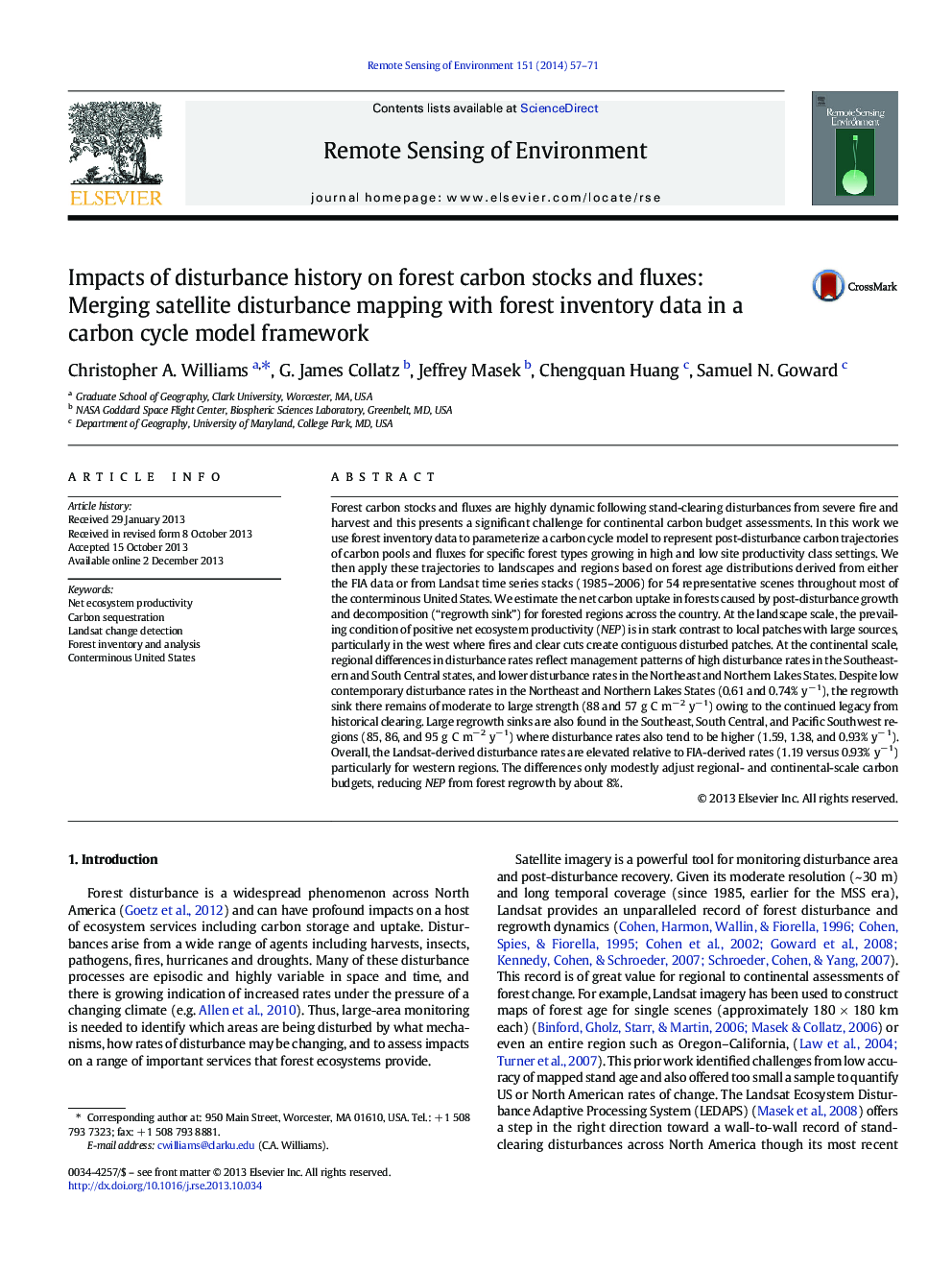| کد مقاله | کد نشریه | سال انتشار | مقاله انگلیسی | نسخه تمام متن |
|---|---|---|---|---|
| 4458873 | 1621249 | 2014 | 15 صفحه PDF | دانلود رایگان |
• We quantify carbon impacts of forest disturbances for the conterminous US.
• Merges disturbance remote sensing, forest inventories, and carbon cycle model
• Landsat-derived disturbance rates are elevated relative FIA-derived rates.
• Regional differences in disturbance rates reflect management patterns.
• Elevated disturbance rates cause modest reduction in estimated net carbon uptake.
Forest carbon stocks and fluxes are highly dynamic following stand-clearing disturbances from severe fire and harvest and this presents a significant challenge for continental carbon budget assessments. In this work we use forest inventory data to parameterize a carbon cycle model to represent post-disturbance carbon trajectories of carbon pools and fluxes for specific forest types growing in high and low site productivity class settings. We then apply these trajectories to landscapes and regions based on forest age distributions derived from either the FIA data or from Landsat time series stacks (1985–2006) for 54 representative scenes throughout most of the conterminous United States. We estimate the net carbon uptake in forests caused by post-disturbance growth and decomposition (“regrowth sink”) for forested regions across the country. At the landscape scale, the prevailing condition of positive net ecosystem productivity (NEP) is in stark contrast to local patches with large sources, particularly in the west where fires and clear cuts create contiguous disturbed patches. At the continental scale, regional differences in disturbance rates reflect management patterns of high disturbance rates in the Southeastern and South Central states, and lower disturbance rates in the Northeast and Northern Lakes States. Despite low contemporary disturbance rates in the Northeast and Northern Lakes States (0.61 and 0.74% y− 1), the regrowth sink there remains of moderate to large strength (88 and 57 g C m− 2 y− 1) owing to the continued legacy from historical clearing. Large regrowth sinks are also found in the Southeast, South Central, and Pacific Southwest regions (85, 86, and 95 g C m− 2 y− 1) where disturbance rates also tend to be higher (1.59, 1.38, and 0.93% y− 1). Overall, the Landsat-derived disturbance rates are elevated relative to FIA-derived rates (1.19 versus 0.93% y− 1) particularly for western regions. The differences only modestly adjust regional- and continental-scale carbon budgets, reducing NEP from forest regrowth by about 8%.
Journal: Remote Sensing of Environment - Volume 151, August 2014, Pages 57–71
